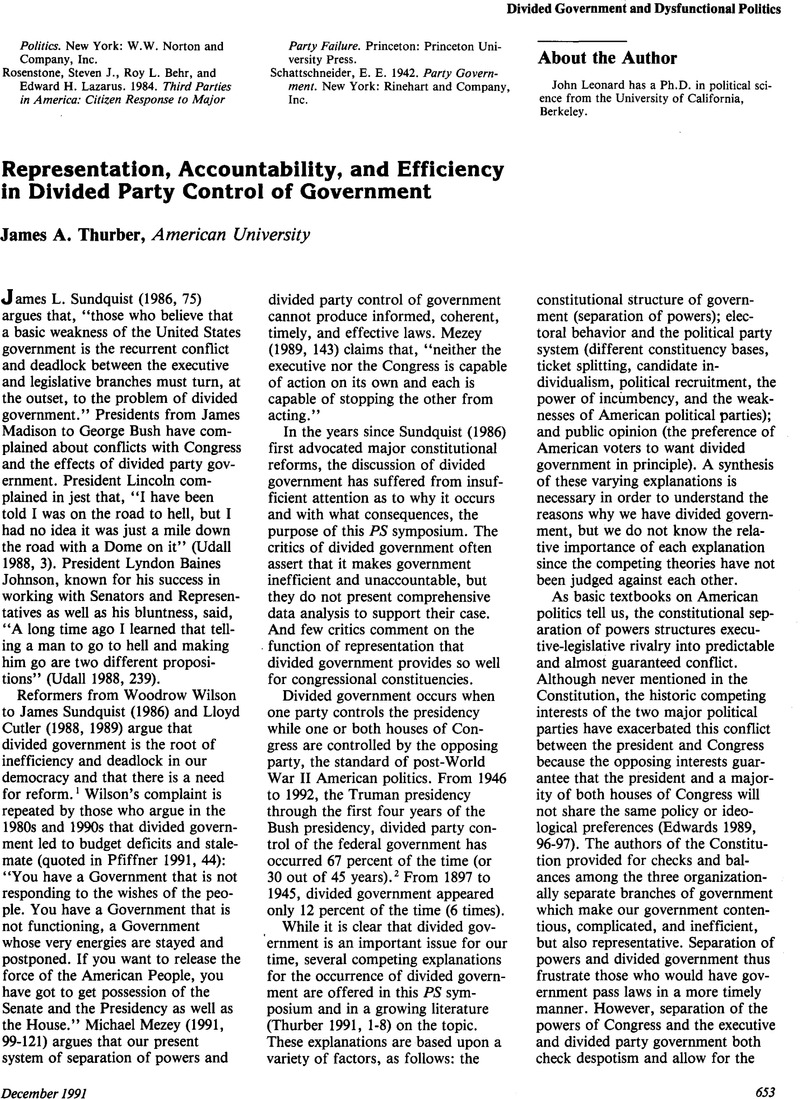Crossref Citations
This article has been cited by the following publications. This list is generated based on data provided by Crossref.
Vile, John R.
1993.
The Long Legacy of Proposals to Rewrite the U.S. Constitution.
PS: Political Science & Politics,
Vol. 26,
Issue. 2,
p.
208.
Kelly, Sean Q
1995.
THE INSTITUTIONAL FOUNDATIONS OF INTER‐BRANCH CONFLICT IN THE ERA OF DIVIDED GOVERNMENT.
Southeastern Political Review,
Vol. 23,
Issue. 4,
p.
615.
Schneiderman, Stuart B.
1998.
AN EXAMINATION OF THE EFFECT OF DIVIDED STATE GOVERNMENT ON TAX INNOVATION: 1960–1990.
Southeastern Political Review,
Vol. 26,
Issue. 1,
p.
249.



